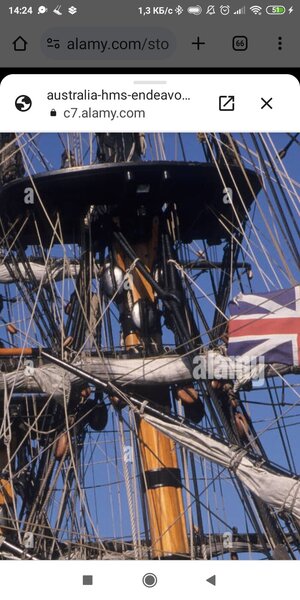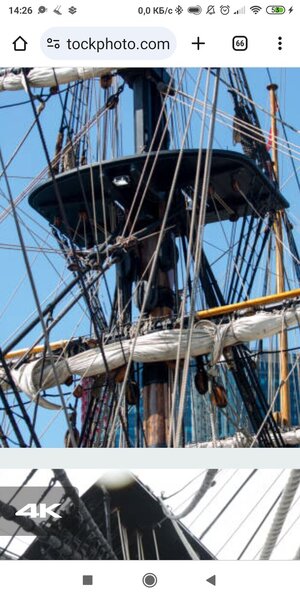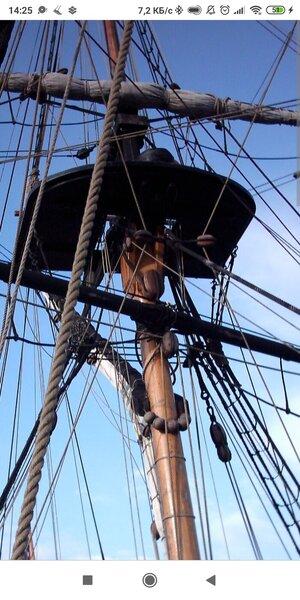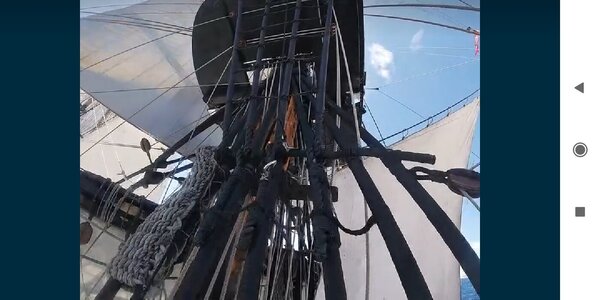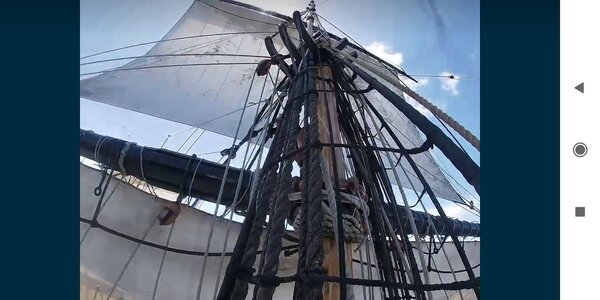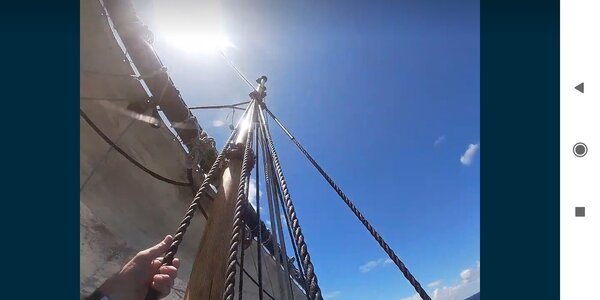I'm finishing up my first wood build, HMS Endeavour and have ordered the Diana. One thing (ok, many) I need some help is securing the yards to the installed masts. With the Endeavour I notched both units on the table and glued them together and then installed the mast. There was issues in keeping them square. I've noticed most of you install the mast first then the yard to it. Whats your method in securing them ?? I don't want to make the same mistake on the next build. thanks for the help.
You are using an out of date browser. It may not display this or other websites correctly.
You should upgrade or use an alternative browser.
You should upgrade or use an alternative browser.
The yards were not usually square with the mast. They hung at angles defined by the sails, brace and tack line tensions, and the wind. The yardarms are typically held to the masts by a rig called a parrel, used commonly up to about 1806, for the lower yards such as the courses and the topsails. Simple slings were used for smaller yards and also for the lower yards on small vessels.I'm finishing up my first wood build, HMS Endeavour and have ordered the Diana. One thing (ok, many) I need some help is securing the yards to the installed masts. With the Endeavour I notched both units on the table and glued them together and then installed the mast. There was issues in keeping them square. I've noticed most of you install the mast first then the yard to it. Whats your method in securing them ?? I don't want to make the same mistake on the next build. thanks for the help.
HERE WE GO! Parrels 101:
The balls of wood are called trucks, and these are separated by ribs. The parrel line passes through the trucks and ribs and around the rib as shown. THe figure below is simplified with less ribs and truck shown for clarity. Typically, the course yards (lowest) had three rows as you see below for large ships, and only two rows of trucks rigged for topmast yards and higher.
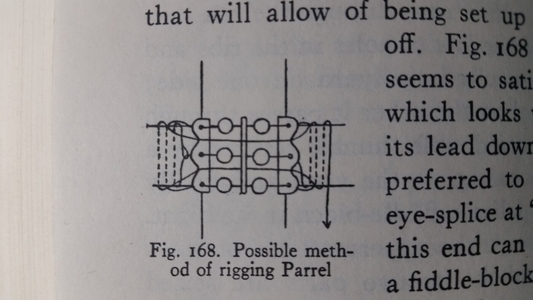
You can make a parrel using beads for trucks and thin wooden rib pieces like these below. Brown, glass hobby beads make excellent trucks because they look like wood.
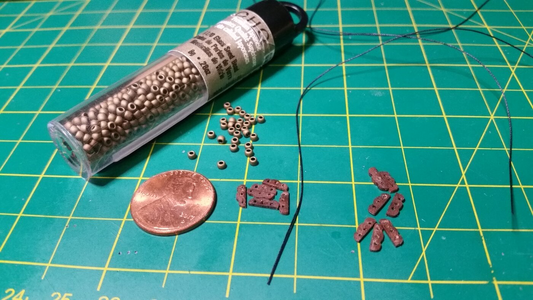
It's best to rig the parrel as a flat band with tape to hold the assembly together while your work. You make it long enough to go around the mast, but not too long such that the yard fits sloppily against the mast. It should contact the front surface of the mast and be held there by the tension of the parrel.
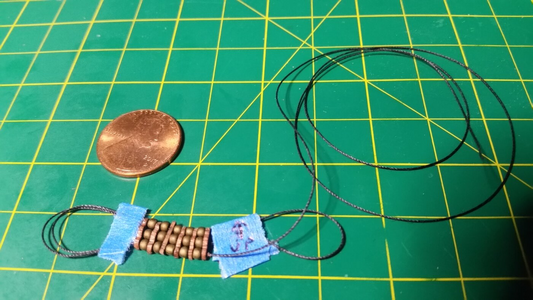
Rigging a parrel is a royal pain in the ass, but wit tweezers and patience, you can do it. Not that one end of the parrel line has an eye that attaches to the standing part of the parrel line, and the loose end runs down to the deck to a tackle hooked to a deck eyebolt or other belaying point. The tackle allows for adjustment of the tension.
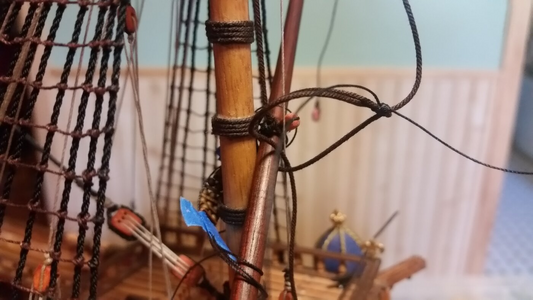
The tackle on this early 17th century ship is simply belayed alongside the mast. There are variations of course. Consult DETAILED rigging plans for HMS Endeavour or look at other modeler's build logs for how it was done on that ship. Model kits almost never show you the details of parrel rigging and oversimply this important feature.
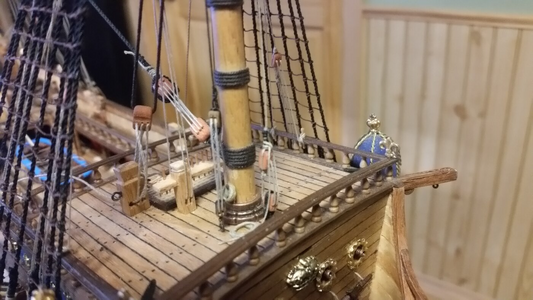
Like I said, rigging a parrel is complicated and it's really crowded in there with all the standing rigging already in place. However, anyone who knows ship rigging will recognize the effort in doing it right.
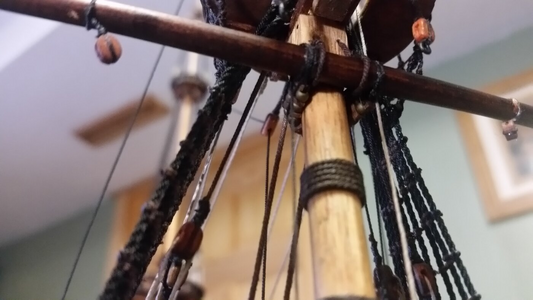
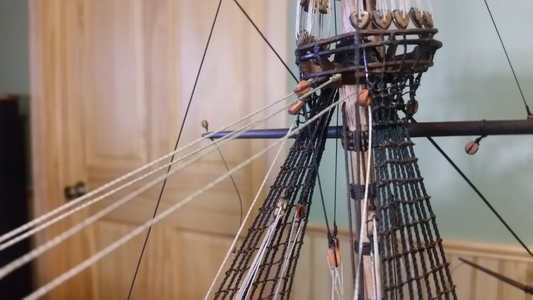
If you can master rigging the parrel for the squaresail yards, now comes the tricky lateen sail yard parrel:
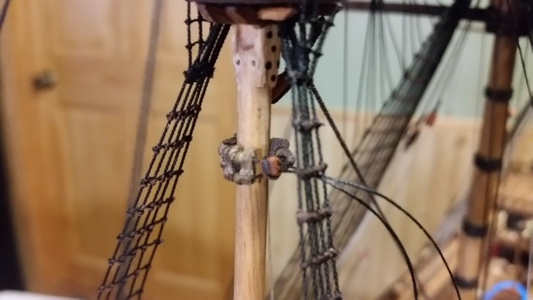
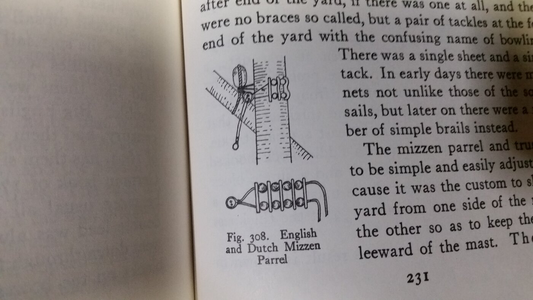
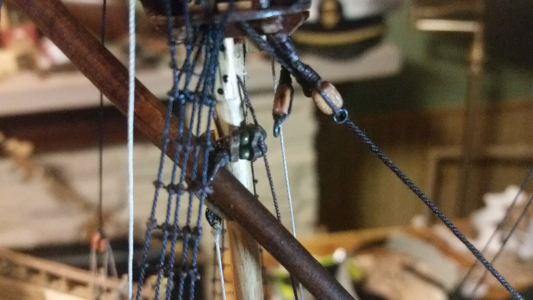
Parrel line belayed as before, alongside the mast with a tackle.
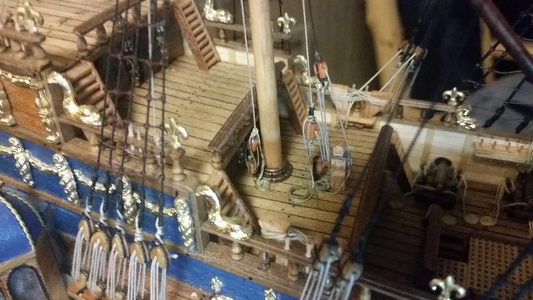
Note that the crossjack yard on the mizzen about the lateen yard has only two rows of trucks. Many modelers simplify the lower yard parrels by using only two rows instead of three. I made three because I'm a glutton for punishment, and VERY stubborn. It takes me 1-2 hours to rig one.
Example of a two-row parrel on a topgallant yard.
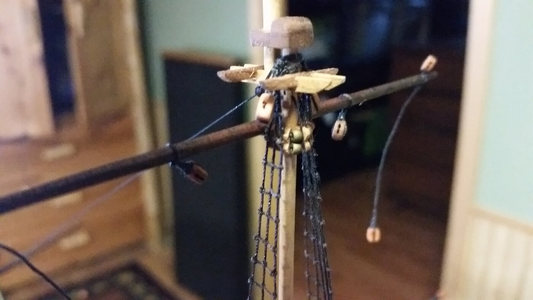
Lastly, here is a yard secured using a sling. The sling has two eyes, one on each end, and the challenge is making the second eye such that the sling is taut and not sloppy. In this example, the sling is used to hold the spritsail yard to the bowsprit. You can make out the two seized eyes of the sling on the port side of the bowsprit.
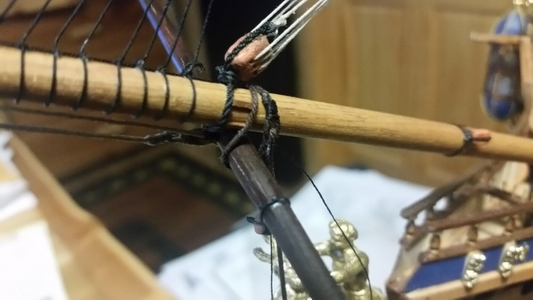
Last edited:
What he said ! 

Thank you Kurt!! The pics and your explanation show everything in great detail. The # 6 & &7 pics show 2 holes drilled in the masts with the lines running thru....is this right do do, or, was this something else? I think I will practice on the table with some extra dowels left over. The bigger trick will be at the mizzen mast. Thanks again for your explanation and pics of describing this so well.
More detail than you bargained for, I'll wager. At least it's good to know what you're simulating if you choose to simplify this feature. And no, you don't drill any holes in the mast. That's model kit manufacturer trying to make yard attachment simple, albeit clumsily, and easily spotted as a simplification by ship modelers in the know. Perhaps the kit was trying to simulate something other than the parrel, like the halyard at the example at the bottom, used for suspending a topsail or topgallant yard? As you can see, there were variations for supporting the weight of the yardarm for different sized vessels and different time periods.Thank you Kurt!! The pics and your explanation show everything in great detail. The # 6 & &7 pics show 2 holes drilled in the masts with the lines running thru....is this right do do, or, was this something else? I think I will practice on the table with some extra dowels left over. The bigger trick will be at the mizzen mast. Thanks again for your explanation and pics of describing this so well.
Note that jeers are combine with a truss to secure the yardarm, not a parrel. Can anyone confirm whether HMS Endeavour used jeers or halyards ?
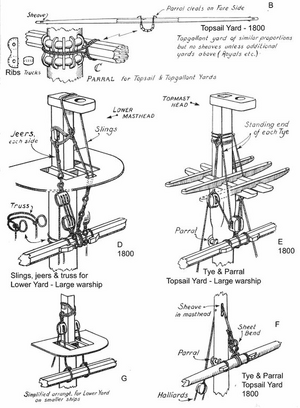
One method used in ships of the 18th and 19th century is the use of jeers. These hold up the weight of the yard while a parrel holds the yardarm to the mast. Both are loosened to raise or lower a yardarm.
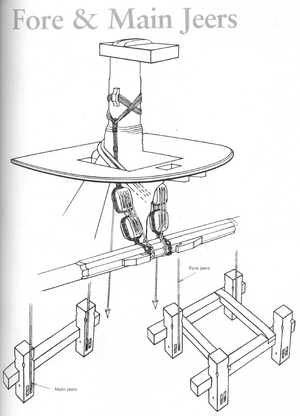
Like I said... it gets CROWDED in there under the top!
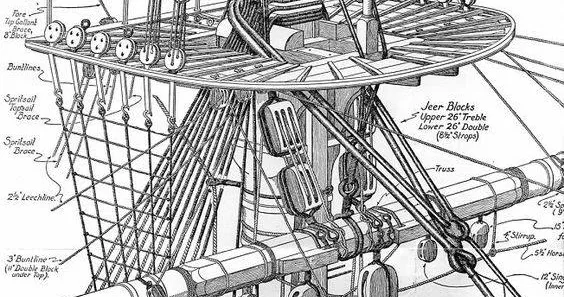
Last edited:
I think this option is more suitable for HMS Endeavor...One method used in ships of the 18th and 19th century is the use of jeers. These hold up the weight of the yard while a parrel holds the yardarm to the mast. Both are loosened to raise or lower a yardarm.

Here is a video of the captain of this ship, Mr. Anthony Longhurst, climbing onto the main mast of his ship.
https://www.facebook.com/share/v/nt1AhLa2a3gD1C3D/
https://www.facebook.com/share/v/nt1AhLa2a3gD1C3D/
HMB Endeavour, Darling Harbour Maritime Museum, Sydney, Australia
Some photos of Endeavour
shipsofscale.com
Rigging jeers and a truss is easier than the older parrels and tie/halyard. Good news for the Endeavour builder.





